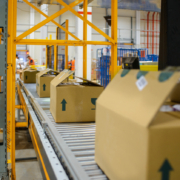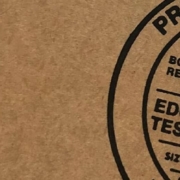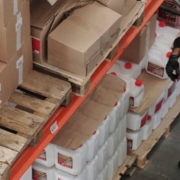What Is Cartonization? Tools and Techniques
A leading subscription box company, FabFitFun, was having some cartonization issues. They send quarterly boxes of products to their subscribers. When they started offering their customers the ability to customize the boxes, cartonization became more complicated. They turned to MagicLogic to solve the problem, and they ended up saving millions of dollars each quarter.
Understanding cartonization
Why would cartonization optimization help a company save millions of dollars? Great question. Cartonization is the process of placing products into a box (or carton), but it’s not just about finding any box that fits. Optimized cartonization means you use the right-sized box for the products with minimal wasted space and a reduced need for filler material.
Have you ever received an online order with a very small product in a box ten times too big? That’s overboxing. To simplify a complex issue, using bigger boxes than needed will cost more money in shipping charges. Obviously there’s more to it. Keep reading.
Types of cartonization
Let’s start by understanding various types of cartonization relevant to logistics. Each type offers unique benefits depending on the complexity of your product offerings, the volume of your orders, and the level of optimization within your fulfillment process. Knowing which type of cartonization is right for your business will improve efficiency and reduce costs.
-
- Manual cartonization: Exactly as it sounds, manual cartonization means workers manually select the appropriate box size based on their experience or predetermined guidelines. It’s more labor-intensive than other methods and can lead to wasted space, wrong box sizes, and wasted time.
- Fixed-size cartonization: A step above manual cartonization, fixed-size cartonization means a specific set of box sizes is used, and products are automatically assigned to the closest matching size. This can be faster than the fully manual process, but it may not result in the most efficient solution, as variations in product dimensions and packing needs are not fully accounted for.
- Dynamic cartonization: With dynamic cartonization, algorithms and data are used to automatically select the most optimal box size based on product dimensions and packing requirements. This method ensures the best use of space while reducing material costs and improving shipping efficiency.
- Multi-product cartonization: If you need to pack multiple items in a box, that’s multi-product cartonization. For this method, the size and shape of each item must be taken into account to determine how to arrange the products into the box for the most efficient use of space. As FabFitFun found, this can be complicated.
- Robotic cartonization: This advanced form of cartonization puts robots to work to automatically select and pack items into cartons. Robotics can significantly speed the process, improve accuracy, and be more efficient, especially in high-volume warehouses and fulfillment centers.
- Layered cartonization: This method is particularly good for oddly shaped or delicate items that need to be packed with extra care. Placing the products in layers can improve stability and keep the products safe during shipping.
The cartonization process
The cartonization process can be broken down into the following steps:
1. Assess your products
Start by taking a good look at your products. Are they large and boxy, small and fragile, or somewhere in between? Understanding the size, shape, and nature of each item is key to figuring out the best way to pack it.
2. Select the optimal box size
Once you know exactly what you’re packing, it’s time to channel your inner Goldilocks and find the perfect box. Not too big, not too small. Your goal is to fill the space with products to minimize wasted space but make sure it all fits snugly to keep things safe. Also keep in mind that smaller boxes can be less expensive to ship, so the optimal box size can save you money.
3. Arrange the products in the box
Are you a Tetris aficionado? If so, this is your moment to shine! The key here is to arrange your products in a way that maximizes space and keeps everything secure. That generally means put heavier things on the bottom with fragile items on top, and use filler to keep things secure.
4. Fill the empty space with padding
You’ll probably have a bit of extra space left, and that means it’s time to add a bit of filler so things don’t shift around too much. You can use anything from crumpled paper to bubble wrap, foam peanuts to air pillows. For especially fragile items, molded pulp is a great option, especially if you want to be environmentally friendly.
5. Finalize for shipment
Whew, you’re almost there! Next, seal up the box with tape, slap on a shipping label, and give it a quick once-over to make sure everything’s good to go. Now it’s ready for delivery, whether it’s across town or on the other side of the world.
The role of warehouse management systems in cartonization
When it comes to automating your cartonization, your Warehouse Management System (WMS) isn’t just a bystander—it’s the behind-the-scenes wizard making sure everything runs smoothly. Your WMS plays a starring role when combined with cartonization software:
-
- Integrating cartonization software with your WMS: Think of your WMS as the mastermind orchestrating the perfect packing process. By integrating cartonization software directly into your WMS, the cartonization system can automatically select the right box for each product. No more guesswork or last-minute decisions. It’s like having a packing pro on hand 24/7!
- Real-time data synchronization
Imagine trying to pack a box without knowing what’s in it—chaos, right? WMS ensures real-time synchronization of all inventory and order data. This means cartonization decisions made by your cartonization software are based on the most up-to-date information, making sure you never over-pack (or under-pack) and always use the most efficient box size for each order. - Operational efficiency with WMS When it’s paired with cartonization software, your WMS does more than keeping track of your inventory. It boosts your operational efficiency by automating the carton selection and arrangement process, speeding up packing times, reducing human error, and maximizing warehouse space. The result? More efficient operations with fewer boxes wasted (and everyone’s happier).
Why cartonization matters
Automating your cartonization is a game-changer for your entire logistics process. Why? It will lower your shipping costs and improve packing efficiency, sustainability, and customer satisfaction. Bold claims, you say? Let me explain:
Lower shipping costs
When it comes to shipping, size matters—literally. When you optimize your cartonization, you’re using the smallest box that fits the product while keeping it secure, and that reduces excess weight and volume (especially if your carrier uses dimensional weight to calculate rates). That reduces shipping costs because you’re not paying to ship empty space. It’s like getting a discount for packing smarter.
Improved packaging efficiency
Warehouse workers who have to do all the thinking for themselves take valuable time to choose the right size box, try to fit the products in it, and add in the proper amount of packing material. Let’s do some simple math: A warehouse worker may pack 150 packages an hour, which translates to 24 seconds spent on each. If it takes two to four seconds for them to make these decisions, automated cartonization software will save each worker five to ten minutes in an hour. Out of an eight-hour work day, that’s over an hour of their time. Multiply that by 10 warehouse workers, and it starts to add up—especially when you consider that warehouse worker pay has increased by 48% in the last seven years.
More eco friendly
Optimizing your cartonization will save you more than just money—you’ll also be saving the planet. Using the right-sized box means you’ll cut down on fillers, reducing material waste and reducing your environmental footprint. FabFitFun, the company mentioned at the beginning of this article, reduced their carton packing material by 30% to 35% when they started using cartonization software. It’s packing with a purpose, and it’s good for business (and the Earth).
Increased customer satisfaction
At the end of the day, customers care about two things: the condition of their products and the speed at which they arrive. Efficient cartonization ensures their products arrive safe and sound, with no unnecessary waste. Customers appreciate receiving their orders in a perfectly packed box with no damage, no excess, and have a great unboxing experience. (Note: Unboxing videos are still going strong. If your brand shows up in an unboxing video, make sure it’s a good experience.)
Innovations in Cartonization
Like everything else in logistics, cartonization is changing rapidly. It’s not just about using the right box, it’s about using the smartest tools available. Watch for these innovations that will change the way we box up our shipments in the coming months and years:
Advanced robotics
Robotic systems are already making waves in warehouses, and the next frontier will include more intelligent and autonomous robots that can not only pack products but also assess product characteristics in real time. The robots will be adaptable to work with fragile goods to irregularly shaped products and more, with minimal human intervention. This will improve packing speeds, reduce labor costs, and improve accuracy in packing.
Cloud-based solutions
The cloud makes cartonization easier and more accessible than ever. A cloud-based cartonization solution allows you to access the needed tools from anywhere, at any time, with no hassle. Whether you’re working from a tablet on the warehouse floor or tracking metrics from the comfort of your office, cloud technology connects it all for smoother, more efficient operations.
3D scanning and visualization
Warehouses will soon be able to use 3D scanning technology to create digital models of each product, providing precise measurements for cartonization. This will help determine optimal packing methods based on shape and size down to the millimeter.
Sustainable packing solutions
As the world moves toward sustainability, we will see a greater need for biodegradable and recyclable packing materials. Innovations in compostable packing peanuts, paper-based air pillows, and molded pulp will figure more prominently, and plant-based plastics may become more mainstream. This will produce less waste and a lower carbon footprint for those who embrace these innovations.
Predictive analytics
Predictive analytics looks at historical data and trends and forecasts future packing needs, helping you anticipate demand and optimizing packing strategies. It’s like having a crystal ball for your warehouse, ensuring you’re always one step ahead in managing packaging and shipping processes.
Implementing Cartonization With MagicLogic
Want help automating your cartonization? MagicLogic’s Cube-IQ is the most powerful and advanced solution on the market. Here’s why:
-
- Unrivaled speed: Our carton selection response speed is under 100 milliseconds, allowing you to process 100 orders per second with real-time shipment evaluations before the customer clicks.
- Customizable solution: Our solution is fully customizable to fit your unique needs, providing the flexibility to adapt to even the most complex requirements.
- High-quality coding: Our industry-leading coding ensures top-tier performance and seamless operation.
- Adaptive handling of unique-shaped parcels: You can tailor your packing strategies for parcels of all shapes and sizes.
- Seamless integration: MagicLogic integrates easily with your existing WM, ERP, and other systems for a smooth transition and continuity in your operations.
- Graphical user interface (GUI): Our comprehensive user interface has drag-and-drop functionality with 3D graphics for creating loading jobs.
- Trusted by the biggest brands: Leading brands like Honeywell, Starbucks, Nestle, P&G, Johnson&Jonson, and The Home Depot use MagicLogic.
- 24 years in the industry: We’ve demonstrated enduring reliability and continuous innovation in load planning.
Oh, and one more thing, you can take it for a test drive for free. In fact, many MagicLogic users started with a free trial and found that the savings and efficiency gains easily justified the investment. Optimize your cartonization and start saving today!






